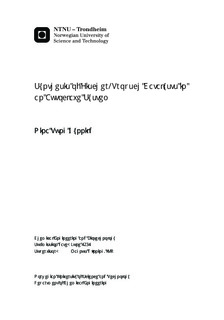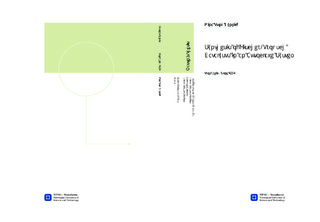| dc.description.abstract | 12- or 18 wt.% cobalt and 0.5 wt.% rhenium was impregnated on nickel-aluminate spinel support supplied by Statoil R&D. The catalysts were dried in an autoclave continuous stirred tank reactor with different reactor parameters. Reactor parameters, such as duration, temperature and stirring rate were adjusted in each experiment in order to see how they affect the catalyst preparation. Some of the catalysts were treated in a closed reactor system or a combination of both closed and open reactor system. All catalysts have been characterised by nitrogen adsorption/desorption analysis and hydrogen chemisorption. In addition, a number of catalysts were further run in the Fischer-Tropsch synthesis. These catalysts were also characterised by oxygen titration in order to determine the degree of reduction.
Each experiment was devised on the basis of the result obtained from the previous one. The intention was to dry each catalyst in the reactor for three hours and with a stirring rate of 100 rates per minutes. In most experiment, the stirring rate was adjusted to 200 rates per minutes and duration varied within 30 minutes to three hours. The desired drying or set temperatures were 110, 150 or 270 oC. It was difficult to maintain a constant set temperature in the experiments. The temperature increased and decreased ongoing in each experiment. In addition, the highest observed temperature during drying for some catalysts was almost 80 oC higher than the desired drying temperature.
The majority of the catalysts were dry after drying in the autoclave reactor. Some of the catalysts, particular catalysts dried at 110 oC and catalysts treated in a closed reactor system, had to be further dried in the air furnace. Some of these catalysts had a higher dispersion and surface area compared to the others.
Apparently, a higher drying temperature in the reactor led to a decrease in both surface area and dispersion. A decrease in both surface area and dispersion was found when 18 wt. % was added to the catalyst. However, it was difficult to compare how the results were affected by a particular parameter. It was not only one parameter that affected the catalyst, but the whole system. This made it somewhat difficult to interpret the results.
Two catalysts were dried with exact same drying procedure. The results from the characterisation showed that it was possible to reproduce the same catalyst with same properties.
Five catalysts were run in the Fischer-Tropsch synthesis. The results obtained from the Fischer-Tropsch synthesis shows that all catalysts were active during the synthesis and managed to reach a high C5+ selectivity.
There is a potential for making good catalysts at 110 oC in the reactor, also with treatment in a closed reactor system. Drying and calcination of catalysts in an autoclave reactor at 270 oC does not seem to be suited. | |

